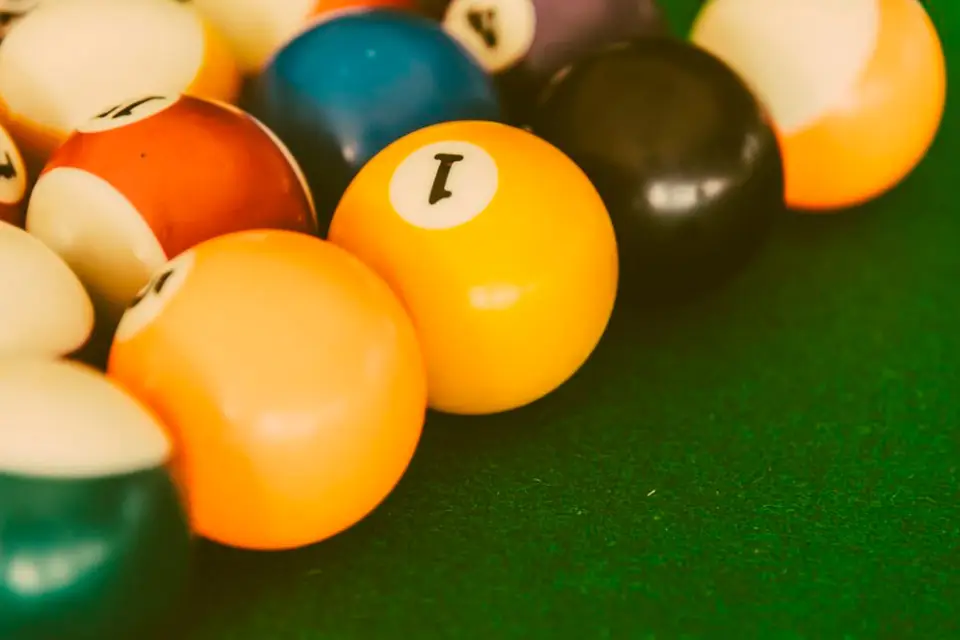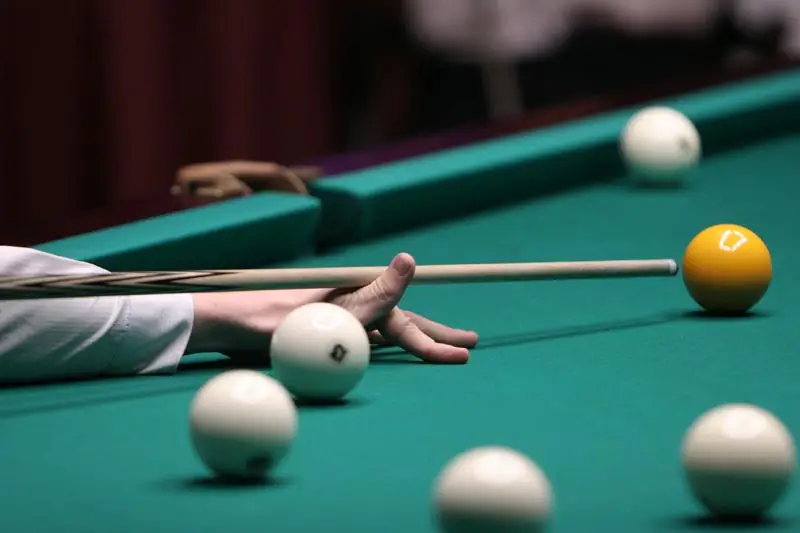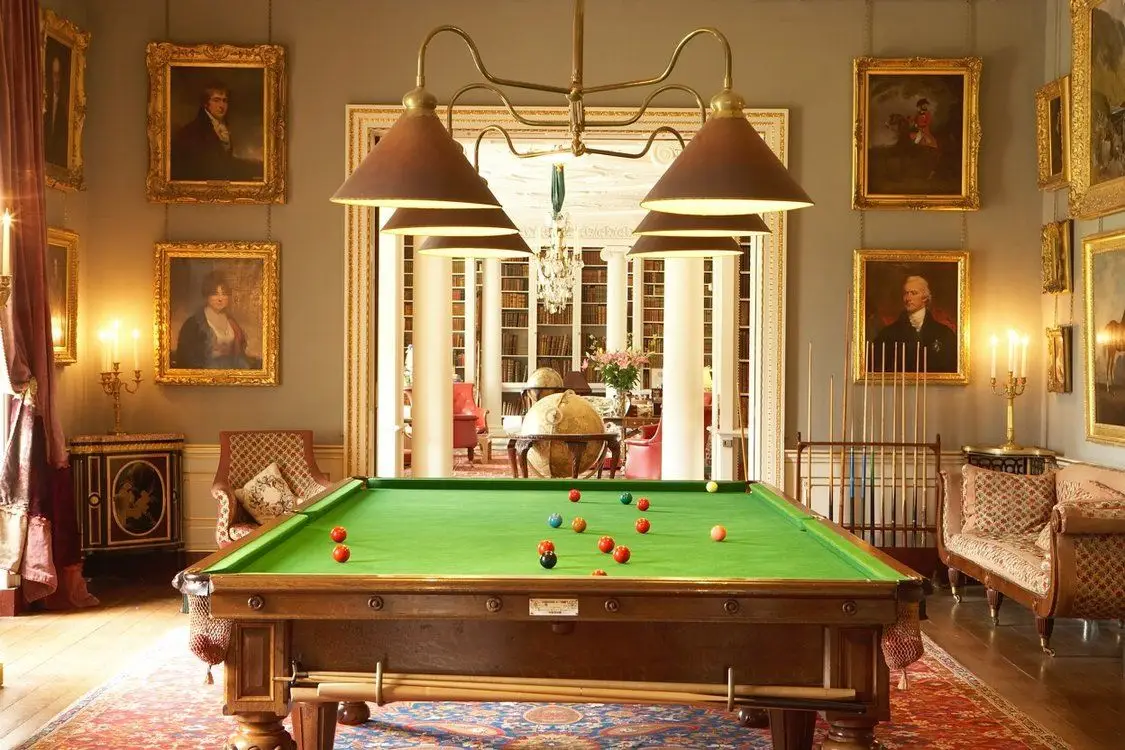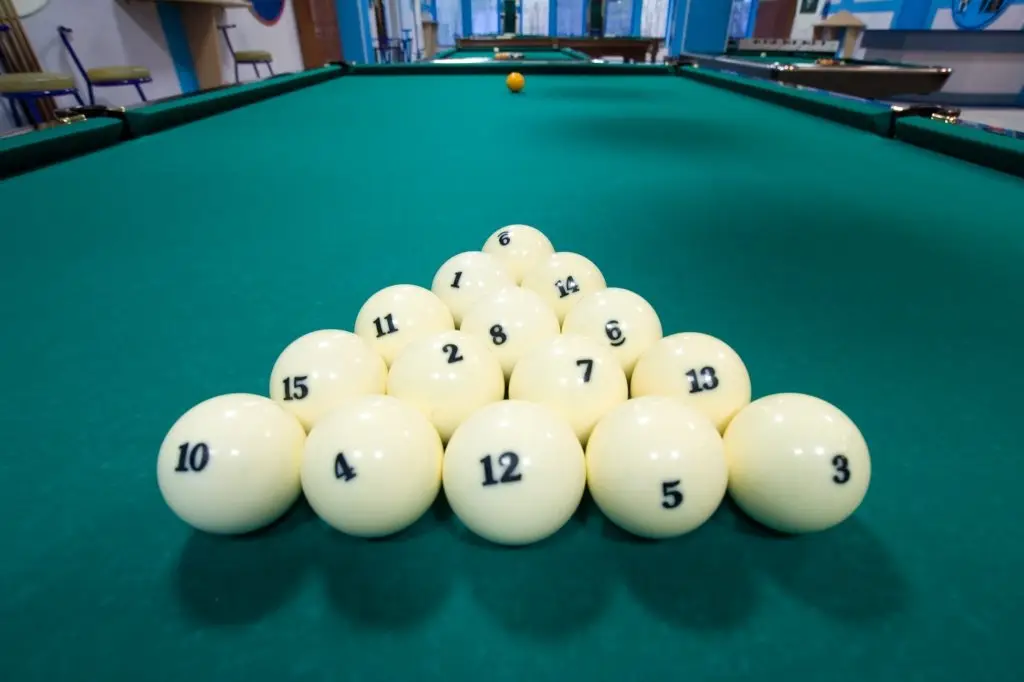Professional billiards begins not with arm strength, but with eye accuracy. Every effective shot consists of dozens of decisions made before the shot: choosing the point, calculating the trajectory, controlling the pause, the angle of contact, body orientation, and fixing the gaze. At an intense pace of play, aiming technique in billiards is the foundation of skill. An error of a fraction of a millimetre leads to a deviation of tens of centimetres. Therefore, aiming requires a system, not a feeling.
Billiards guide: technique
Every game begins with an analysis of the table. A professional player draws a line between the point of contact of the cue and the centre of the target ball. The aiming technique in billiards is based on an imaginary axis that passes through two objects, the cue and the target, and continues to the pocket. The closer the angle is to a direct shot, the greater the chance that the shot will be effective.
Linear dependencies
A deviation of only 2° from the calculated line reduces the accuracy of a shot in billiards by 9–13%. In addition, the degree of deviation is influenced by the distance between the balls: the further the cue ball is from the target ball, the greater the effect of even the smallest deviation. Professional players focus their gaze not on the line, but through the point of contact to obtain a clear spatial image.
Fixation system: gaze, body, cue
 One of the crucial factors in aiming is the synchronisation of the body, the cue and the line of sight. The shoulders, elbows, hands, head and cue must form a single plane in relation to the table. When aiming in billiards, turning the body, tilting the shoulders, turning the elbow or moving the centre of the head is a no-no. Any deviation causes a twist in the line of strike and shifts the point of impact.
One of the crucial factors in aiming is the synchronisation of the body, the cue and the line of sight. The shoulders, elbows, hands, head and cue must form a single plane in relation to the table. When aiming in billiards, turning the body, tilting the shoulders, turning the elbow or moving the centre of the head is a no-no. Any deviation causes a twist in the line of strike and shifts the point of impact.
Working with position
The height above the cue influences the viewing angle. The optimal level is 15 to 20 cm from the cue to the centre of the chin. This distance ensures maximum clarity of vision while maintaining depth perception. Changing this height influences the subjective perception of the aiming point and creates a false sense of direction.
Calculation of the point of contact in billiards: the essence of ‘cutting’ in the aiming technique
The essence of aiming is not to hit the ball, but to hit the point, which is located on an imaginary line of contact. The greater the angle between the cue’s trajectory and the direction to the pocket, the more difficult it is to choose the direction of contact. The technique of aiming in billiards requires an understanding of the concept of cutting: the clear definition of the point where the cue must hit to get the target ball into the pocket.

At a cutting angle of 30°, the target shifts between 15 and 17 cm from the axis at a distance of one metre. An error in the point of contact of just 3 mm changes the direction between 6 and 8° and moves the ball between 20 and 25 cm from the centre of the pocket. The sharper the angle, the smaller the tolerance.
Controlling the pause: cadence as a precision instrument
Aiming does not end at the moment of impact. The last 2 seconds before the shot create a feeling of stability. The mechanics include a pause between the final swing and the shot itself. At that moment, the gaze is focused on the point of contact, the body is stabilised and breathing stops. Eliminating abrupt movements from the rhythm increases the stability of the shot.
Acceleration dynamics
The impulse at the moment of impact reduces accuracy by 15-20%, especially when trying to control the force. A smooth and even movement of the hand guarantees the stability of the line. It is precisely through an even rhythm that professionals achieve repeatability: when striking at the same angle and speed, the result is predictable.
Errors in aiming technique in billiards: perceptual pitfalls
If your gaze deviates 1 cm from the centre of the ball, accuracy decreases to 76%. Repeating these errors during the game reduces effectiveness to 55% hits at an average level of preparation. Beginners’ mistakes:
- Focusing on the pool: the gaze wanders beyond the target ball, causing the cue to shift to one side.
- Turning the head during the stroke: the change in the viewing angle changes the coordinates.
- Ignoring the position of the feet: the turned body deviates from the line of stroke.
- The angle of the cue: too high or too low support affects stability and the contact point.
- Lack of a practice swing: the lack of prior alignment of the movement increases the spread.
If the gaze deviates 1 cm from the centre of the ball, accuracy decreases to 76%. Repeating these mistakes during the game reduces effectiveness to 55% hits at an average level of preparation.
Beginner and first shot: take it easy with the basics
The mistake beginners make is that they want to do everything at once. A simple shot then becomes a marathon of decisions. The technique of aiming in billiards requires a pause and breaking down the steps. The first step is choosing the point. The second is determining the line. The third is checking the balance of the body. The ability to break down the process into stages simplifies the execution.
Working with the diametric illusion
The problem of assessing the centre of the ball is one of the most common obstacles. The visual and geometric centring do not match due to perspective. When viewed from above, the ball appears to be shifted. To avoid mistakes, professionals do not rely on their memory, but on fixation eye contact, basing themselves on the lines and not on the shape of the object.
The shot as the culmination of the calculation: the aiming technique in billiards
An effective shot does not depend on force, but on direction. Even at low speed, the cue can hit the target accurately if the correct line is maintained. The aiming technique in billiards requires that the energy be applied along the vector, and not at an angle. A shot with rotation or lateral momentum without the proper preparation changes the point of contact. Professionals assess not only the point, but also the degree of pressure. In a short-distance shot, excess energy causes a rebound, while in a long-distance shot, this energy may not be sufficient. Therefore, training direction is more important than working on power.
Conclusion
 Real progress does not begin with another hour at the table, but with the moment when you focus on the process rather than the goal. The technique of aiming in billiards is not based on the movement of the hand, but on thinking. A structure emerges: observation, alignment, stabilisation, conscious stroke. It is precisely this cycle that the professional creates. The result is not a series of successful shots, but the ability to predict the result before the shot.
Real progress does not begin with another hour at the table, but with the moment when you focus on the process rather than the goal. The technique of aiming in billiards is not based on the movement of the hand, but on thinking. A structure emerges: observation, alignment, stabilisation, conscious stroke. It is precisely this cycle that the professional creates. The result is not a series of successful shots, but the ability to predict the result before the shot.

 en
en  ru
ru  de
de  ar
ar  es
es  nl
nl  hi
hi  fr
fr  it
it  pt
pt  el
el 



